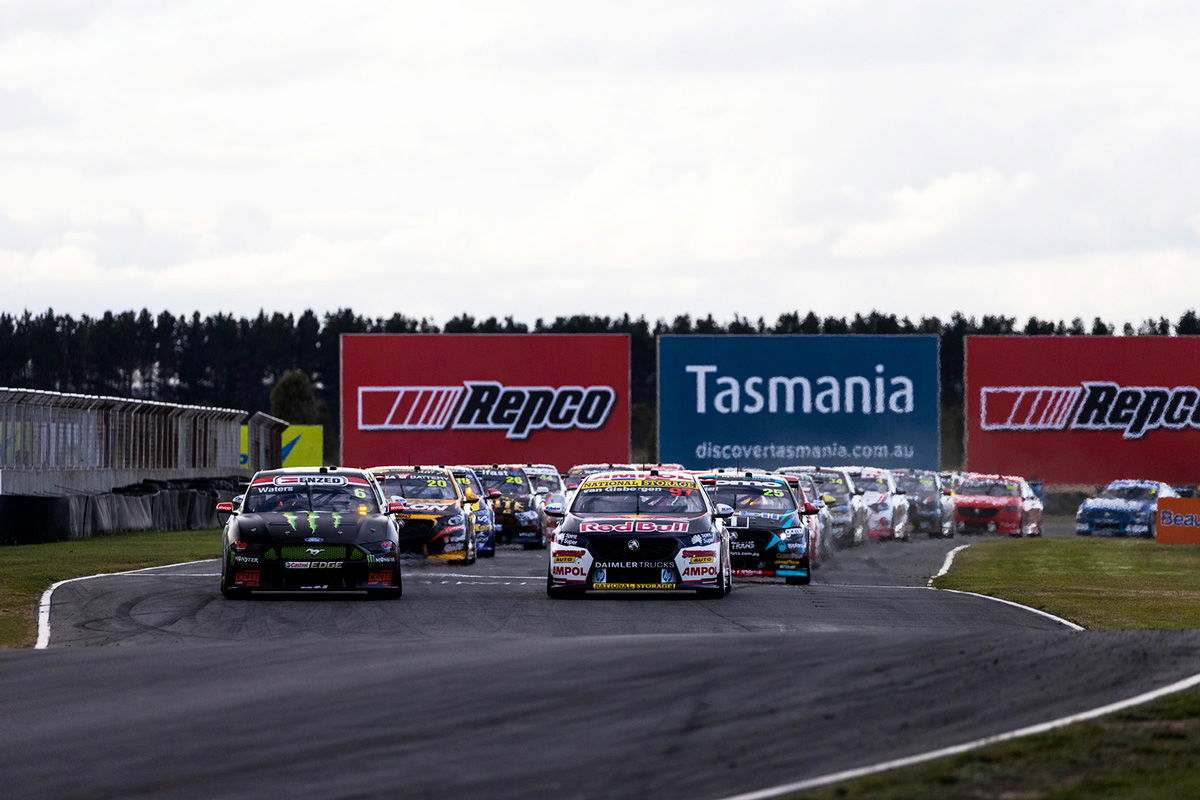

Supercars is set to assess whether it continues with its split qualifying system for shorter circuits after a confusing implementation at the Tasmania SuperSprint.
Drivers and team bosses frequently spoke ill of the concept on the broadcast, many seeming perplexed.
“It’s a little bit confusing and it’s also a little bit different to [from Saturday to Sunday] which has probably added to the confusion,” Tickford CEO Tim Edwards said on the broadcast.
“It’s obviously all to try to deal with the track density but I think there’s a fair view up and down the pit lane that maybe we should just let 24 cars go out and give them a whack if they get in someone’s way.”
There were also doubts about the fairness of the format, given the potential it created for unequal opportunity with relation to track conditions.
Changes were made this year for how Supercars would qualify at Symmons Plains and Wanneroo Raceway – the two shortest tracks the category uses.
To avoid 24 cars scrambling for track position to bang in a sub-minute lap time, the grid was divided into Group A and Group B based on which side of the garage they sit on.
For example, Will Davison and Shane van Gisbergen took part in Group A, with their respective team-mates Anton De Pasquale and Jamie Whincup allotted to Group B. As it would turn out, cars in Group A tended to dominate proceedings.
Further complicating matters, the manner in which the grid was settled for each of Race 6, Race 7, and Race 8 was different.
Saturday qualifying for Race 6 involved a three-part knockout format, in which the fastest eight of each 12-strong group would proceed to a top 16 session, from which the top 10 would go through to the final stage.
Sunday qualifying involved a total of four segments alternating between Group A and Group B, to set the grid for that afternoon’s two races.
For that, times were simply combined between the two eight-minute sessions for the Race 7 grid, and the two subsequent five-minute sessions for Race 8 – as opposed to the IndyCar method whereby the position of each group relates directly to the row number a car will start on.
Such was the confusion that on Sunday, the television commentary team appeared to slip up, calling the Race 8 grid as final before Group B had even taken to the track.
The concern is, if it’s so complicated that even expert commentators and the drivers themselves are puzzled, how it would be received by fans.
On the flipside, having the full field qualifying at the same time has been problematic at the relevant venues.
Supercars will review the format before deciding whether to stick with the system, or revise it, for the Bunnings Trade Perth SuperNight on September 11-12.
“Like everything we do or change, it will be reviewed, and a decision will be made if we make any changes,” a Supercars spokesperson told Speedcafe.com.
“That is too early to say today.”
Triple Eight Race Engineering driver and Supercars Commission member Jamie Whincup explained the basis of the split system during the Saturday post-race press conference.
Previously events like Tasmania and Perth had seen final practice taken into account to avoid a full grid qualifying at any given time, but Supercars has since moved away from having practice influence qualifying.
“For safety reasons, we couldn’t have all 24 cars on the track at the same time, here and Perth as well,” said Whincup.
“The Commission came up with the best system possible, they did a good job, we’ve just got to remember if there is any advantage here for A or B it will be reversed for Perth.
“Hopefully if there is an advantage, which I don’t think there will be, it will be reversed and over the year it will be consistent.”
Next up in the 2021 Repco Supercars Championship will be Round 4, the OTR SuperSprint, at The Bend Motorsport Park on May 8-9, where a more familiar qualifying procedure will be in place.





















Discussion about this post